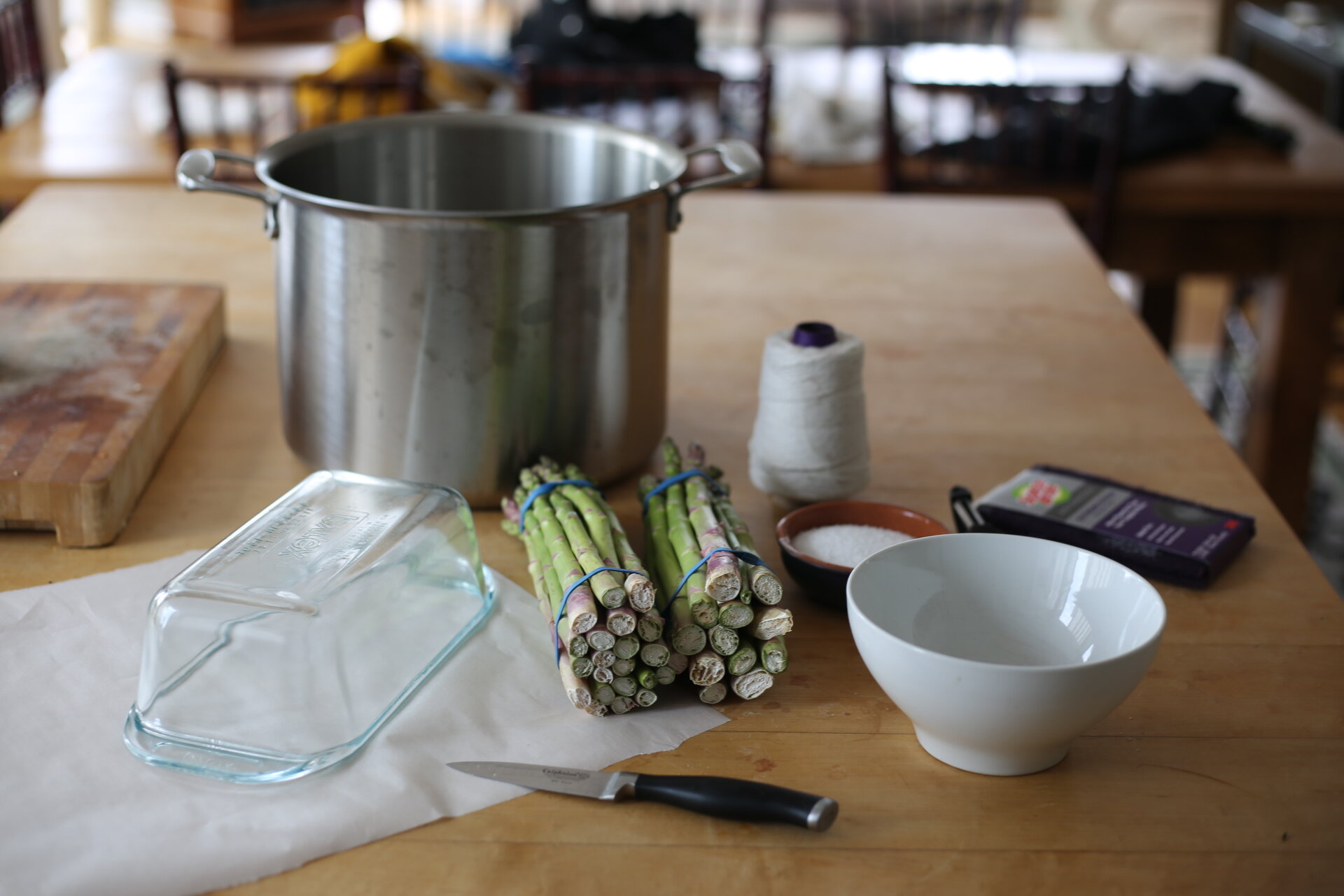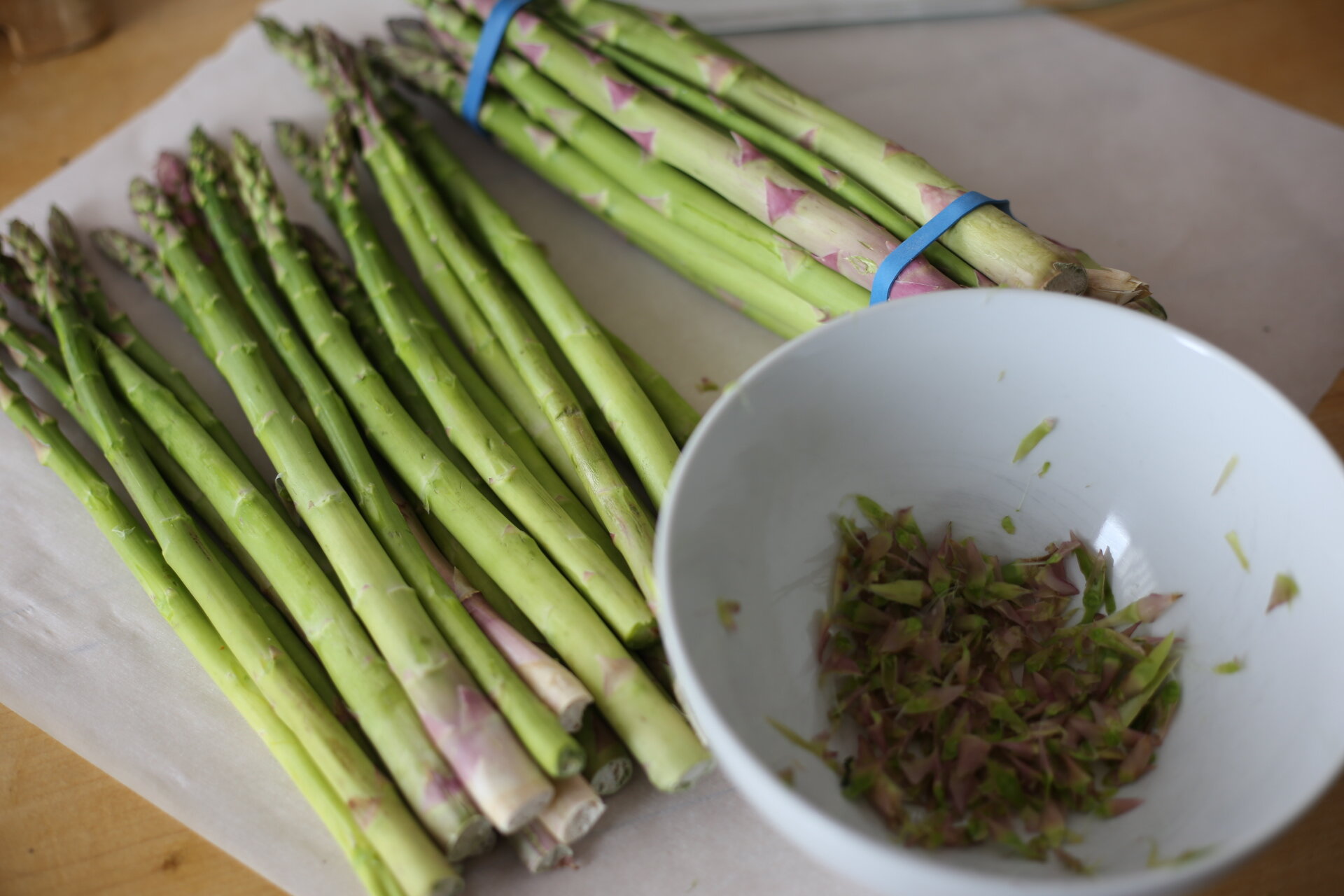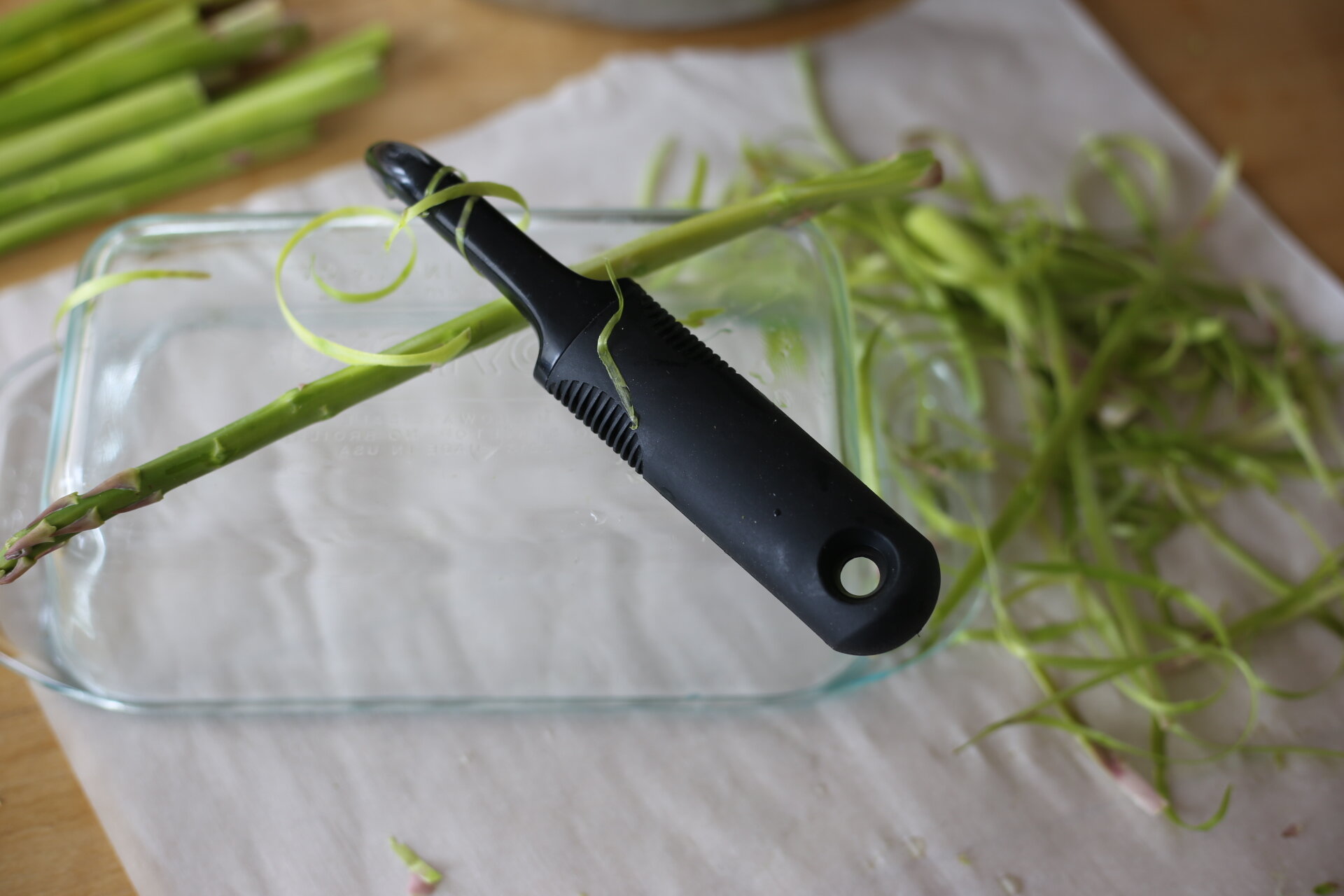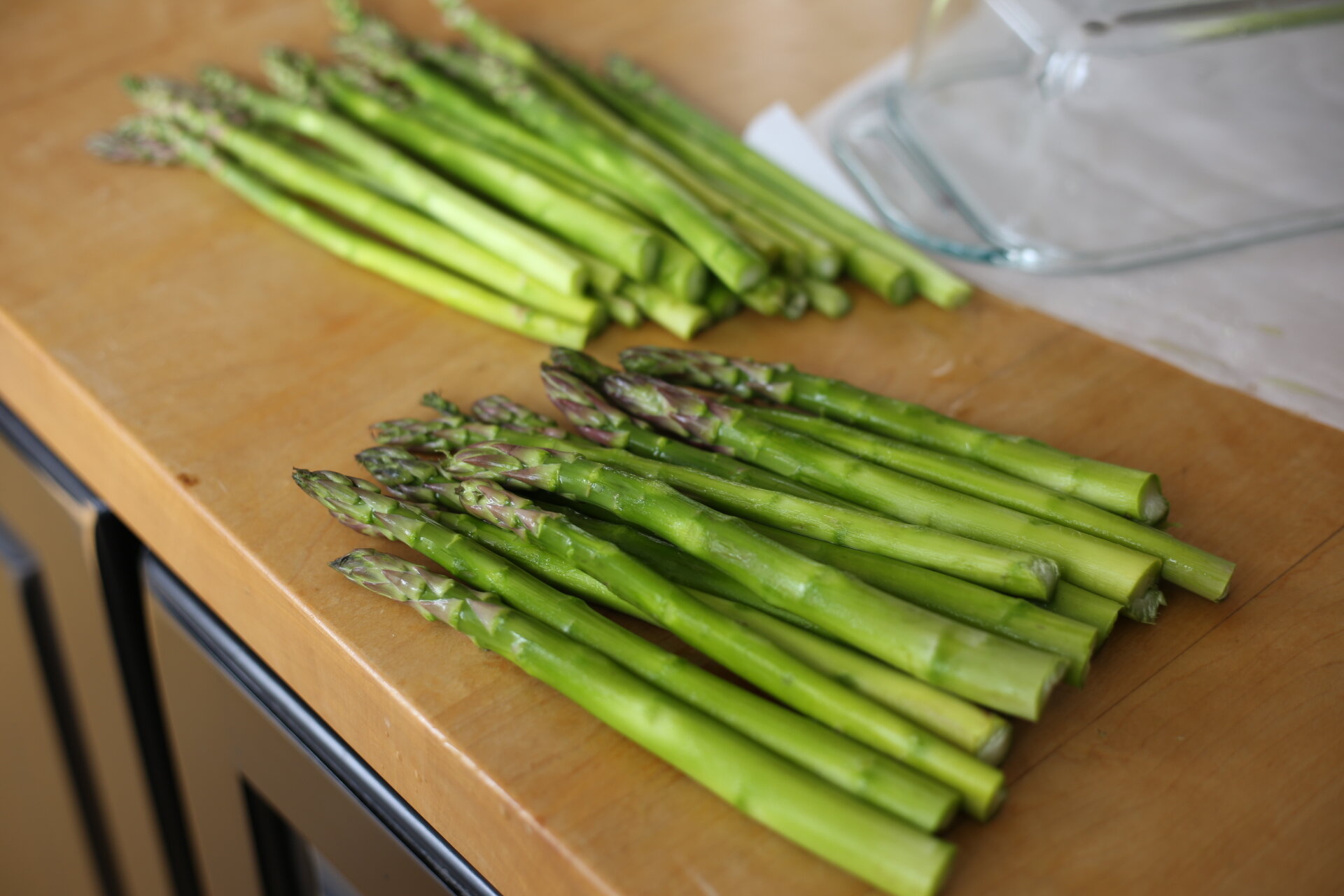TKMC Big-Pot Blanching: Asparagus
My first Thomas Keller Master Class was a lesson on big-pot blanching with asparagus. I always thought blanching and boiling were sort of the same thing, only difference being the flash of ice cold water at the end. Turns out there’s a few steps I’ve been skipping. TK gives us a Master Class on how refine and cook our vegetables to give them that made by a professional chef look. I’ve broken down into each step along with key takeaways from my lesson.
TK first shows us how to remove the flappy purple-colored nubs from the stalk using a small paring knife. I had no idea you were supposed to do this. Can you imagine sending your asparagus back at a restaurant because the chef failed to remove the nubs? Haha! There’s something very Portlandia about that. The removal of the nubs took about 15 minutes but it’s a very zen-like endeavor. Your brain just sort of checks out while you do it.
Next, we are instructed to peel the outer edge of the asparagus using a vegetable peeler. TK prefers a Swiss peeler or a French Economoise Peeler (Economy Peeler). He suggests using an upside down loaf pan for leverage and parchment paper to catch the trim (he hates the word scraps). I had some trouble using the peeler as I felt it took too much off and I wouldn’t have enough asparagus left. He then pulls out a kitchen scrubby (like the kind you use to clean pots and pans) and demonstrates how to use it like sandpaper to remove the outer fiber. I really liked this method and it leaves the asparagus feeling soft and velvety.
Once your asparagus has been de-nubbed and peeled, snap the ends at the natural break point.
Grab some kitchen string and bundle your asparagus, not too many in a bunch. You don’t want to add a lot of asparagus at once as it will drop the water temperature causing uneven cooking and the veggies will lose color. The string protects the asparagus from bouncing around in the “violent environment” of the boiling water. Once the spears are bundled, cut the ends, about a 1/4 inch, to even them out.
Boil a big pot of water and add A LOT salt, enough to make it taste like sea water. This is the flavoring agent for your asparagus so it’s crucial to season appropriately. Drop in a couple bundles and have a bowl of ice water nearby. Cook the asparagus until an inserted paring knife slides in easily. Drop the bundle in the cold water to stop the cooking process, this will also help maintain the bright green color. You can also skip this step and serve the asparagus warm. Chilled asparagus can be held as pre-prep for grilling or sauteeing. Obviously, remove the string before serving.
KEY TAKEAWAYS
Remove the nubs - it takes a little time but you get a beautiful presentation. Your guests will notice you went the extra mile, I know I would!
Use a kitchen scrubby - I now have a designated kitchen scrubby for veggies only. It’s fast, creates zero mess and leaves your veggies feeling velvety smooth.
Use a lot of salt in your blanching water. More than you think you will need. This is what flavors the veggies from the inside out.
The string is not necessary but it does speed up the process of having to remove long vegetables from boiling water.
Don’t blanch too many veggies at once.
The ice cold water stops the cooking process and helps maintain the vibrant color but skip it if you’re serving your veggies hot.








